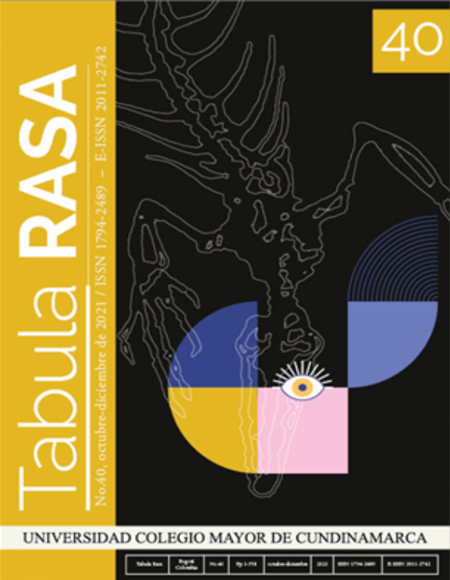Show authors biography
Undoubtedly the relations between dogs and human beings in the Artc has evolved or adapted as populations went from a seasonal nomadism to a partial sedentarism, from a traditional subsistence economy to have their economy depend on the industrialized world. In this article, we analyze those evolutionary changes among Inuit people, a hunting and fishing society, by focusing on the case of the Kalaallit Nunaat people (Greenland), where dogs continue to be genuine, descended from one of the world’s oldest races, and acknowledged as that from 1990. Similarly, we explain the special symbiotic relation between dogs and Inuit hunters, underlining this concept from a traditional community embedded in a modern society that opposes the loss of their cultural identity, despite suffering the consequences of the globalization process, environmental pollution, and global warming.
Article visits 101 | PDF visits 65
Downloads
Bailón Trueba, F. (2018). En la tierra de los inuit. Revista Sociedad Geográfica Española, 59 (enero-abril), 8-19.
Bailón Trueba, F. (2015a). Los inuit. Cazadores del Gran Norte. Barcelona: Nova casa editorial.
Bailón Trueba, F. (2015b). Los poetas del Ártico. Historias de Groenlandia. Barcelona: Nova casa editorial.
Bailón Trueba, F. (2014). Kalaallit Nunaannut tikilluaritsi. Bienvenidos a Groenlandia. ¿Hacia un turismo antropológico? XIII Congreso de Antropología. Lugares, tiempos y memorias. La antropología ibérica en el siglo XXI. Universitat Rovira i Virgili de Tarragona.
Cummins, B. D. (2002). First Nations, First Dogs Canadian Aboriginal Ethnocynology. Calgary: Ed. Detselig Enterprises Ltd.
Egevang, C. (Ed.). (2020). Qimmeq: The Greenland Sled Dog. Copenhagen: Ed. Alle alle.
Estándar Oficial de la Federación Canina Internacional (FCI). (2014). http://www.fci.be/es/nomenclature/PERRO-DE-GROENLANDIA-274.html
Fiocca, A. (2018). Between Kulusummiut and Qimmit. The Relationship between East Greenlanders and Sled Dogs in Kulusuk. Reykjavík: Háskólaprent.
Freuchen, P. (1935). Field Notes and Biological Observations. Mammals; part II. Report of the Fifth Thule Expedition 1921-24; vol. II (4-5). København: Gyldendalske Boghandel, Nordisk Forlag.
Grimm, D. (2015). Como el lobo se convirtió en perro. Science, 348(6232), p. 277.
Gubser, N. J. (1965). Nunamiut Eskimos: Hunters of Caribou. New Haven and London: Yale University Press.
Høeg, P. (1995). La señorita Smila y su especial percepción de la nieve. Barcelona: Círculo de Lectores, S. A.
Kishigami, N. (1993). Dogs in the Spiritual World of Traditional Inuit Society of Canada: With Special Reference to Dogs in the Traditional Netsilik Inuit Society, Proceedings of the 7th International Abashiri Symposium, pp. 15-26.
Jensen, B. (1961). Folkways of Greenland Dog-Keeping. Folk, 3, 43-66.
Larramendi, R. H. (1995). Los indios esquimales. Quito: Editorial Mapfre y Abya-Yala.
Laugrand, F. & Oosten, J. (2002). Canicide and Healing. The Position of the Dog in the Inuit Cultures of the Canadian Arctic, Anthropos, 97(1), 89-105.
Lemelin, H., Dawson, J., Stewart, E. J., Maher, P. & Lueck, M. (2010). Last-Chance Tourism: The Boom, Doom, and Gloom of Visiting Vanishing Destinations. Current Issues in Tourism, 13(5), 477-493.
Malaurie, J. (1981). Los esquimales del Polo. Los últimos reyes de Thule (I). Aventura Vivida. Barcelona: Ediciones Grijalbo, S. A.
Rasmussen, K. (1932). Intellectual Culture of the Copper Eskimos. Report of the Fifth Thule Expedition 1921-24, (9). Gyldendalske Boghandel, Nordisk Forlag, København.
Rasmussen, K. (1931). The Netsilik Eskimos: Social life and spiritual culture. København. Report of the Fifth Thule Expedition, (8). Gyldendalske Boghandel, Nordisk Forlag, København.
Savolainen, P. (2002). Genetic Evidence for an East Asian Origin of Domestic Dogs. Science, 298(5598), 1610-1613.
Spencer, R. F. (1959). North Alaskan Eskimo. Bureau of American Ethnology, Bulletin 171, Smithsonian Institution.




